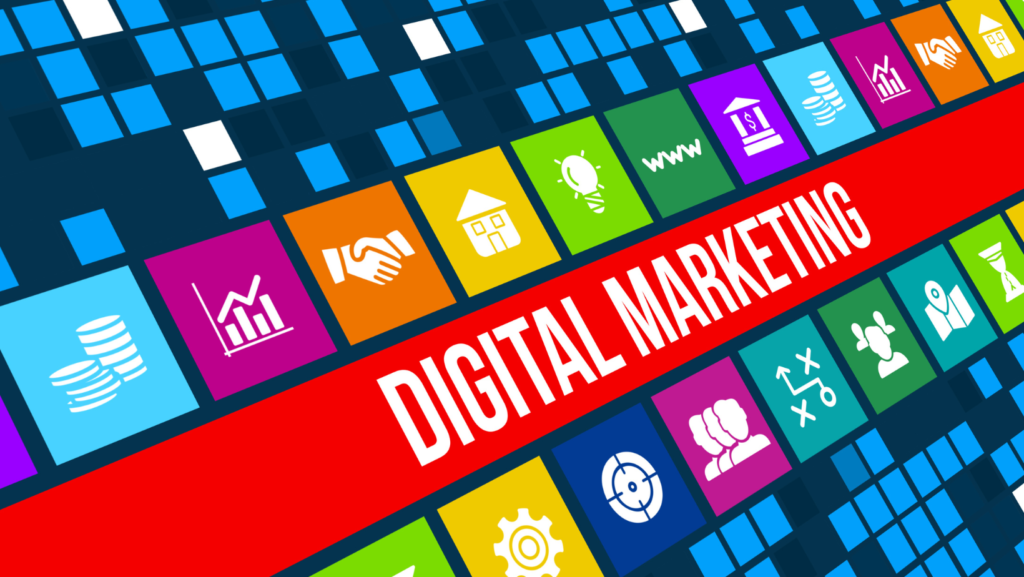In today’s digital-first world, having a strong online presence isn’t optional—it’s essential. With countless digital marketing strategies available, knowing which one is right for your business can feel overwhelming. This guide will break down the major digital marketing strategies—SEO, paid ads, social media marketing, and others—and help you determine when and how to use them effectively.
What is a Digital Marketing Strategy?
A digital marketing strategy is a comprehensive plan that outlines how a business will use online channels to achieve its marketing goals. These strategies typically focus on specific objectives, such as increasing brand awareness, generating leads, boosting sales, or improving customer engagement.
Why Choosing the Right Strategy Matters
Not all businesses are the same, and neither are digital marketing strategies. The right strategy for your business depends on:
- Your industry and niche
- Your target audience
- Your budget and resources
- Your specific goals (e.g., brand awareness vs. sales conversions)

Core Digital Marketing Strategies
1. Search Engine Optimization (SEO)
What It Is:
SEO is the practice of optimizing your website and content to rank higher in search engine results pages (SERPs) for specific keywords. It’s a long-term strategy aimed at driving organic traffic.
Key Components of SEO:
- On-Page SEO: Optimizing website content, headers, meta tags, and internal linking.
- Off-Page SEO: Building backlinks and improving domain authority.
- Technical SEO: Ensuring your site is mobile-friendly, fast, and crawlable by search engines.
When to Use SEO:
- You want to build long-term traffic.
- Your target audience actively searches for products or services similar to yours.
- You have the time to invest in a strategy that takes months to yield significant results.
Examples of Businesses Benefiting from SEO:
- E-commerce stores targeting product-specific searches.
- Local businesses leveraging local SEO to reach nearby customers.
- Blogs and content-driven websites aiming to attract readers.
2. Pay-Per-Click (PPC) Advertising
What It Is:
PPC is a paid advertising model where you pay each time someone clicks on your ad. Platforms like Google Ads and Bing Ads are popular for search advertising, while social media platforms like Facebook, Instagram, and LinkedIn also offer PPC options.
Key Advantages of PPC:
- Immediate visibility in search engine results.
- Precise targeting options based on demographics, interests, and behavior.
- Flexible budgets that allow you to scale your campaigns.
When to Use PPC:
- You need quick results, such as during a product launch or seasonal sale.
- You want to test how well specific keywords or audiences convert.
- You have a budget to invest in a paid channel for immediate traffic.
Examples of PPC Campaign Goals:
- Driving e-commerce sales with Google Shopping ads.
- Generating leads through landing page conversions.
- Increasing app downloads with targeted app-install campaigns.
3. Social Media Marketing
What It Is:
Social media marketing involves using platforms like Facebook, Instagram, Twitter, LinkedIn, and TikTok to build your brand, connect with your audience, and drive sales.
Key Aspects of Social Media Marketing:
- Organic Social Media: Posting regular content to engage with followers.
- Paid Social Media Advertising: Promoting posts or running targeted ad campaigns.
- Influencer Marketing: Partnering with influencers to reach niche audiences.
When to Use Social Media Marketing:
- Your target audience actively engages on social media platforms.
- You want to build a community around your brand.
- You have visually appealing products or services that benefit from multimedia marketing.
Examples of Successful Social Media Use:
- Beauty brands showcasing products through tutorials on Instagram.
- B2B companies sharing thought leadership content on LinkedIn.
- Restaurants promoting specials and events on Facebook.

4. Content Marketing
What It Is:
Content marketing focuses on creating and sharing valuable, relevant content to attract and retain a target audience. This includes blog posts, videos, infographics, ebooks, and webinars.
Key Benefits of Content Marketing:
- Builds authority and trust with your audience.
- Drives organic traffic when combined with SEO.
- Nurtures leads through informative and engaging content.
When to Use Content Marketing:
- You want to establish yourself as an industry authority.
- Your customers need education before making a purchase.
- You aim to provide long-term value that fosters brand loyalty.
Examples of Content Marketing in Action:
- A software company creating tutorials and whitepapers.
- A fitness brand publishing workout plans and diet guides.
- An educational platform offering free webinars to attract students.
5. Email Marketing
What It Is:
Email marketing involves sending targeted messages to a list of subscribers to build relationships and drive conversions.
Key Features of Email Marketing:
- Personalized messaging based on subscriber behavior.
- High ROI due to low costs and targeted outreach.
- Automation tools for drip campaigns and newsletters.
When to Use Email Marketing:
- You have a growing subscriber list.
- You want to nurture leads through regular communication.
- You’re promoting recurring events, sales, or content updates.
Examples of Email Campaigns:
- E-commerce brands offering discounts to previous customers.
- SaaS companies onboarding new users with tutorial emails.
- Nonprofits sharing stories and soliciting donations.
6. Affiliate Marketing
What It Is:
Affiliate marketing involves partnering with individuals or companies who promote your product in exchange for a commission on sales.
Benefits of Affiliate Marketing:
- Cost-effective—only pay for results.
- Access to niche audiences through affiliates.
- Scalable with minimal upfront investment.
When to Use Affiliate Marketing:
- You sell products or services with mass appeal.
- You want to expand your reach without significant advertising costs.
- You’re willing to share profits in exchange for conversions.
7. Influencer Marketing
What It Is:
Influencer marketing leverages the reach and trust of social media personalities to promote your brand.
Key Advantages:
- Authentic promotion through trusted figures.
- Access to highly engaged niche audiences.
- Content creation handled by influencers.
When to Use Influencer Marketing:
- Your product appeals to a specific audience or demographic.
- You want to build brand awareness quickly.
- You have a budget to partner with reputable influencers.

Choosing the Right Strategy for Your Business
Here’s how to identify the best strategy for your needs:
- Define Your Goals:
- Are you aiming to increase traffic, generate leads, or boost sales?
- Long-term goals like brand authority might lean toward SEO or content marketing, while short-term goals may favor PPC or social media ads.
- Understand Your Audience:
- Where does your target audience spend their time online?
- What kind of content resonates with them?
- Assess Your Resources:
- Do you have the time and budget for paid campaigns, or are you focusing on organic growth?
- Do you have the skills in-house for content creation, or will you outsource?
- Monitor and Optimize:
- Test different strategies and track metrics like click-through rates, conversions, and ROI.
- Be flexible and adapt your approach based on what works best.
Conclusion: Tailoring Your Strategy
No single strategy fits all businesses. The key is to mix and match based on your goals, audience, and resources. A successful digital marketing approach often involves leveraging multiple strategies in tandem. For example:
- Use SEO to build long-term traffic.
- Run PPC campaigns for immediate visibility.
- Engage your audience with social media and email marketing.
By aligning your digital marketing strategy with your business needs, you can maximize your online presence and achieve sustainable growth.

